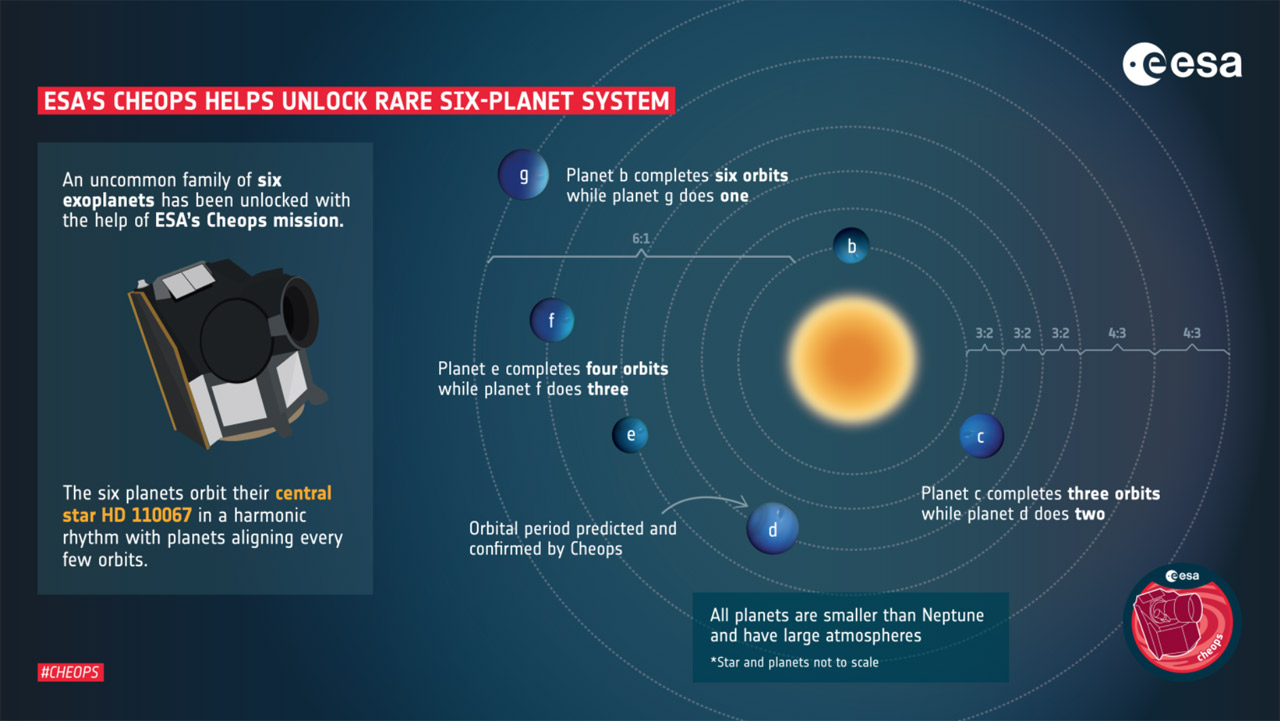HD 110067: a 'perfect solar system'

Astronomers have discovered what they're describing as the 'perfect solar system' – six planets orbiting their star in gravitational lockstep. These half-dozen worlds go around the Sun-like star HD 110067, which lies about 100 light-years away.
In this cosmic ballet, the innermost planet completes 3 orbits in exactly the same time that the next planet completes 2. This pattern – a so-called 3:2 orbital resonance – is repeated out to the fourth planet. Then for the outer two planets, the ratio of orbital periods changes to a 4:3 rhythm.
The choreography is so precise that the researchers who discovered it have been able to set it to an endlessly repeating cycle of music, in which the notes and rhythms correspond to each planet and their orbital periods. Have a listen and notice how, as each planet passes the yellow bar, it sounds its own particular note.
Unlike the worlds in our solar system, the planets of HD 110067 have almost certainly been performing the same rhythmic dance since they were formed billions of years ago. They're also very similar in size and composition – so-called sub-Neptunes, midway between icy worlds like Uranus and Neptune and rocky worlds like Earth and Mars.
The early days of our own solar system were marked by violence and upheaval. As the planets were forming there were numerous collisions and orbital disruptions, resulting in gas giants like Jupiter and Saturn alongside relatively small worlds like our own. The worlds of HD 110067, by contrast, have maintained the same pristine configuration that they had from the outset. Researchers think that only about one per cent of all planetary systems stay in orbital resonance and an even smaller fraction have a whole chain of planets in such a configuration.
This is a golden opportunity for scientists to study a multi-planet system that's survived untouched. HD 110067 is also set to become a focal point for learning more about sub-Neptunes. We don't have any of these in the solar system but they're thought to be the commonest type of planet in the Galaxy. We'd love to know more about them: how they form and evolve, what they’re made of, and if they can support the existence of liquid water and even life on their surfaces.
The discovery of this remarkable system was made after analysing data from two spacecraft: NASA's Transiting Exoplanet Survey Satellite (TESS) and the European Space Agency's CHaracterising ExOPlanet Satellite (Cheops). Further observations, it's hoped, will unlock more secrets of this most perfect collection of planets and tell us something about the origin and evolution of systems with a more chequered history like our own.

